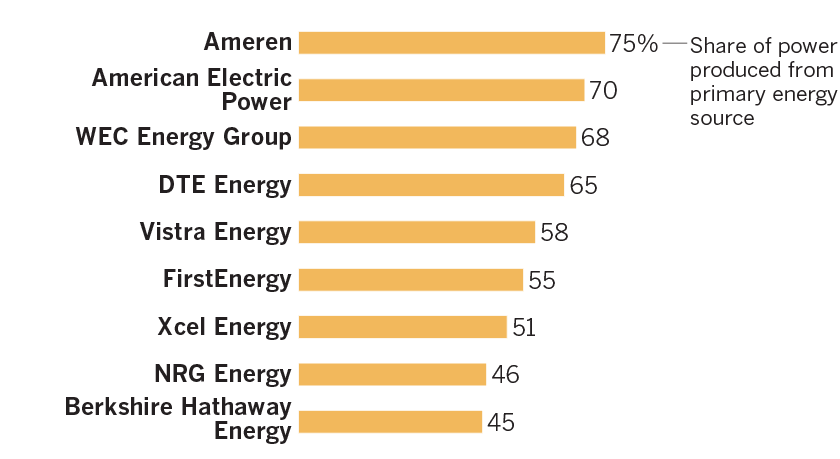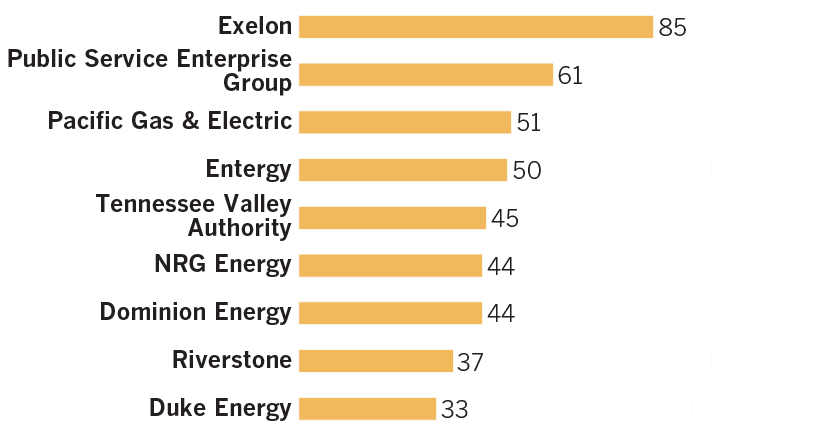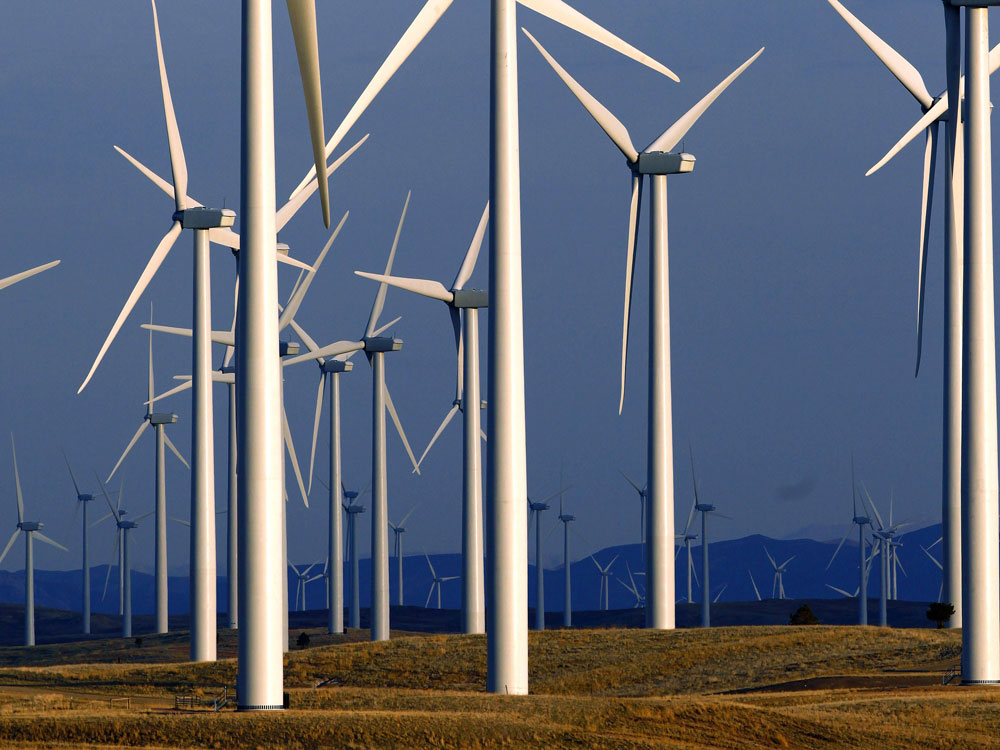



America’s climate change pollution comes from many sources: cars and trucks, power plants, farming operations, home-heating systems and even trees that burn in wildfires.
But in the power sector, 85% of emissions come from just 100 companies and public agencies.
That’s according to a new report from M.J. Bradley & Associates, written on behalf of several businesses and environmental nonprofits. The report shines a light on the country’s 100 largest electricity producers, adding up how much carbon dioxide and other pollutants were generated by each entity’s fleet of power plants in 2017.
The list of top carbon polluters is dominated by some of the nation’s biggest companies, including North Carolina-based Duke Energy, Atlanta’s Southern Co. and American Electric Power of Columbus, Ohio.

Many of those companies still lean heavily on coal, the dirtiest fossil fuel from a climate change perspective. But because the companies are so big, they’re also among the largest producers of carbon-free energy.
The list of top polluters changes dramatically when accounting for how much electricity a company or public agency produces.

Now the list is topped by electric co-ops and public power agencies, which tend to serve fewer customers and have less diverse fuel mixes — and less money to invest in efficiency measures — than their bigger, privately owned peers.
So how do the rest of the top 100 measure up?
Although there’s still plenty of coal power on the grid, it has declined sharply, falling from 44% of U.S. electricity generation in 2009 to 27% last year. A Moody’s analyst recently predicted coal’s share will fall to 11% by 2030, as cheaper power sources — particularly solar, wind and natural gas — win out in the marketplace.
Coal is the largest energy source for just nine of the country’s top 25 power producers, down from 17 in 2008. Most of the 25 largest producers count natural gas or nuclear as their primary energy source. Solar and wind aren’t the leading power source for any of the top 25, although two companies, Florida-based NextEra Energy and Warren Buffett’s Berkshire Hathaway Energy, get nearly one-quarter of their electricity from renewables.




But as solar and wind get cheaper, the pace of change is accelerating, said Dan Bakal, senior director of electric power for Ceres, a sustainability nonprofit and one of the groups that commissioned the report.
“At first the focus was on the shift away from coal to natural gas,” Bakal said. “But what we’re now seeing is the rush to renewables because of the opportunity to earn returns on it.”
The report also identifies the largest producers of carbon-free energy. Nuclear is still the largest source of carbon-free power on the grid, but renewable energy (defined as solar, wind and geothermal power) recently surpassed hydropower for second place.

Berkshire Hathaway is an interesting case study.
The Buffett-owned company operates electric utilities with customers in 11 states across the West and Midwest, including California. Berkshire’s MidAmerican Energy subsidiary has been a leader in clean power, sourcing nearly 60% of its electricity from wind and going on a wind farm building spree in Iowa.
At the same time, Berkshire subsidiary PacifiCorp — which runs the utilities Rocky Mountain Power and Pacific Power — got 54% of its electricity from coal last year, and has faced criticism for continuing to operate coal plants that environmentalists say could be replaced by solar and wind power at a lower cost to ratepayers.
But in a sign of how the energy industry is changing, PacifiCorp has begun to acknowledge its critics may have a point. The company released a study in April finding that closing four of its Wyoming coal units years ahead of schedule could save ratepayers nearly a quarter-billion dollars. The company also broke ground this month on a $3.1-billion clean energy project that includes the construction of hundreds of new wind turbines.

The M.J. Bradley report tracks companies and public agencies based on the power plants they own, rather than the electricity they supply to customers. In some parts of the country, electric utilities own all their power sources, so there’s no difference; in other areas, utilities buy some or all of their power on the open market.
That means customers of Southern California Edison, for instance, won’t learn exactly how clean their power is by searching the data for SCE’s parent company, Edison International. (In California, that information is available from the state’s Energy Commission.) And some companies, such as Duke Energy and Southern Co., serve as the electric utility for customers in particular regions but own power plants across the country.
The M.J. Bradley report was commissioned by Ceres, which works with companies and investors on sustainability; the Natural Resources Defense Council, an environmental advocacy group; Bank of America; and Entergy and Exelon, two power companies that generate the majority of their electricity at nuclear plants.